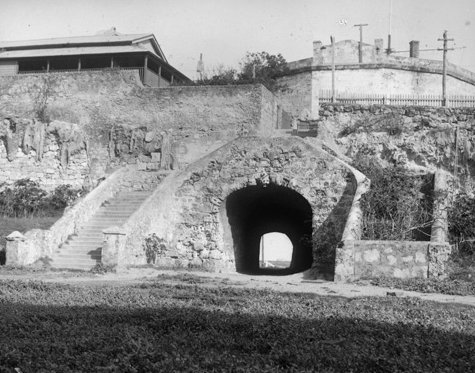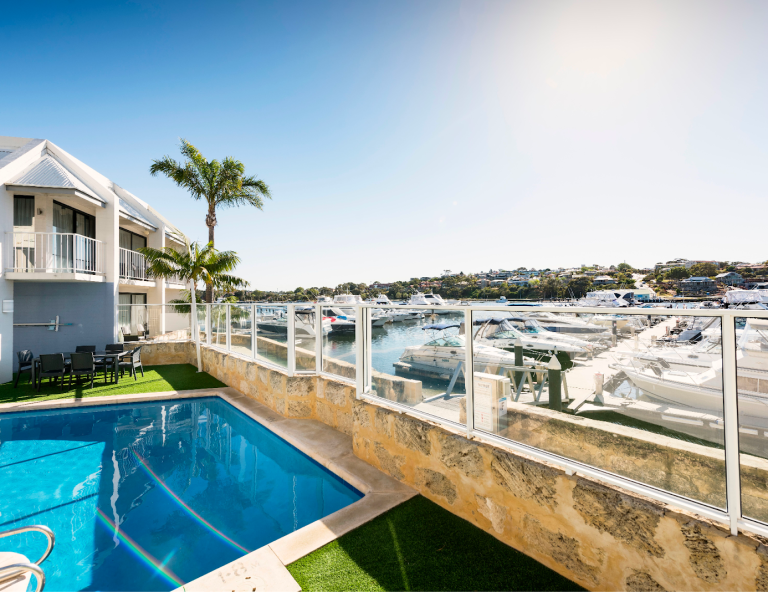
It feels like a lifetime ago that whaling was big business in Australia. But it was only 1978 that it was entirely phased out. And while the practice has long since finished, the infrastructure required to undertake it still remains.
In Fremantle, it stands in the form of the Whalers Tunnel.
Construction of Fremantle Whalers Tunnel
Just 12 years after the Swan River Colony was settled, the Fremantle Whaling Company started up in 1837—one of two in the state at the time. Operating from Bathers Beach, the company caught its first whale off the coast of Fremantle in June that year (actually in a combined effort with their rival company).
To make it easier to bring cargo and whale oil in from the shore to town, the Fremantle Whalers Tunnel was proposed. The idea was to carve out a 45-metre tunnel from the soft limestone of Arthur Head, right underneath the Round House, directly from the beach into town.
Just weeks after that first whale was caught, the proposal was approved. Work on the tunnel began in August 1837 and was completed just six months later in January 1838.
There are a few stories about who actually constructed the tunnel. Some say it was entirely the work of convict labour from those imprisoned in the Round House. But others suggest a more logical idea that it was a team of miners engaged to undertake the project.
The tunnel’s life after whaling
While both WA whaling companies had closed down by the 1860s, the tunnel remained and continued to be used for beach access.
However, over time, it fell into disrepair and out of use. By 1930, it had been boarded up, and public access was forbidden.
It was used again during the Second World War, when a second tunnel was built that branched off to the Gunner’s Cottage above it. This was planned both as an air raid shelter and an escape route for those above ground. Yet it was never needed for this use, and again, fell by the wayside.
Conservation work on the Round House in 1975 saw the tunnel come back to life. Then, in 2020, the City of Fremantle and the state government upgraded the area. A new entrance was added to the tunnel, and a steel-clad canopy added a modern touch to a decidedly historic part of Fremantle.
Today, a footpath runs through Whalers Tunnel, providing even easier beach access for foot and bicycle. Signage along the tunnel provides more information about its use, telling stories about its varied past lives.
What to know before you visit Fremantle’s Whalers Tunnel
While the Roundhouse above is only open during the day, the Whalers Tunnel in Fremantle is open 24 hours a day. It’s free to visit, too.
To make the most of your trip to visit the tunnel, you can make it coincide with the Round House cannon firing. This spectacle occurs daily at 1pm.
It’s a tradition that played a vital role in timekeeping between 1900 and 1937, and enabled the nearby moored ships to confirm the correct setting for their chronometer. And while its actual use is long past, the daily event is now part of Fremantle’s eclectic personality.
Make Whalers Tunnel part of your Fremantle historic experience
The Whalers Tunnel in Fremantle is a step back in time that helps to further bring the history of the town to life. And, interestingly, they’re not the only tunnels you can explore: just one of many historic places to discover when you spend a weekend exploring the portside city.
When you do, book your stay with us at Pier 21. Our friendly team can tell you our favourite spots to visit, and where to go to learn about the stories that make Fremantle what it is today.
